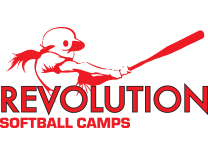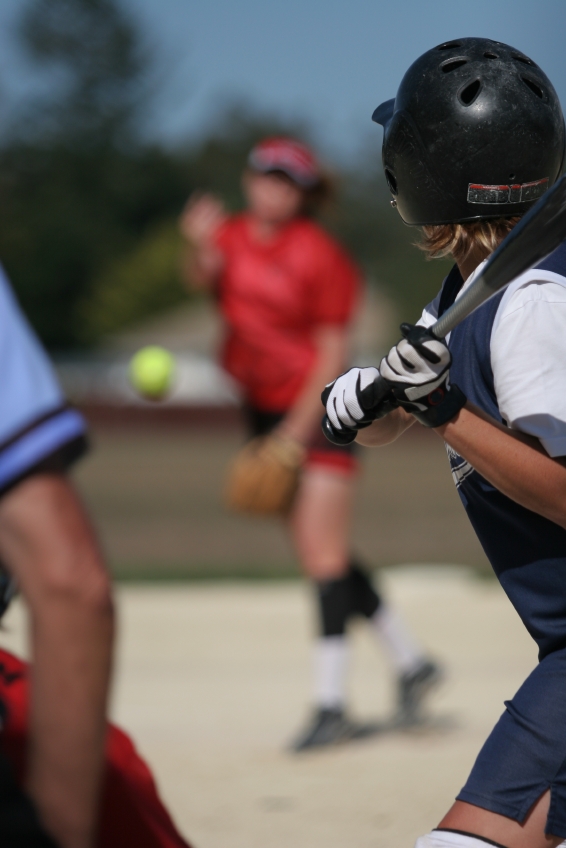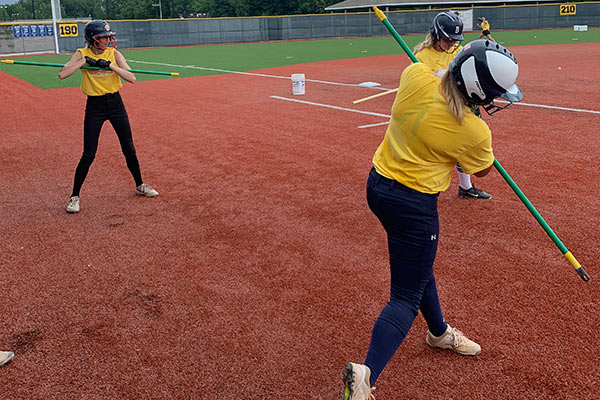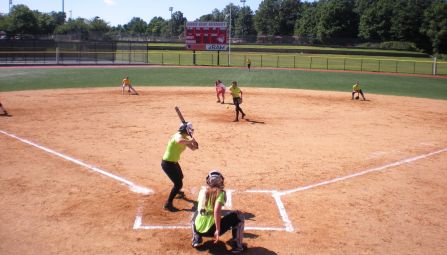The Top Tips For Finding Out What Infield Position is Best For You

Each sport requires different athletic skill sets and builds. Taller people have an advantage in basketball, athletes with quick feet often find themselves playing soccer, and those with excellent hand-eye coordination excel in softball or baseball. But did you know that each position within the sports comes with different skill sets, too?
If you’re wondering how to decide what position to play in softball, summer camps are an excellent opportunity to discover your specialty. High-level softball summer camps taught by expert coaches can help players identify the best softball positions based on a player’s skills and abilities.
So if you’re thinking, “What softball position should I play?” Here is a closer look at how to select the ideal spot on the field for you.
What Are the Softball Positions?
Let’s start with the pitcher and catcher, often referred to as the battery. The pitcher and catcher are involved in every play of the game.
The infield features four key positions: first base, second base, shortstop, and third base.
Softball teams use three outfielders, who roam the large area of the outfield. These positions are left fielder, center fielder, and right fielder.
While many people think softball is exactly like baseball, the two sports sometimes have different amounts of fielders. Some youth softball leagues have a 10th position, called a short fielder. This player is usually in the outfield, either by spreading the four outfielders out evenly or positioned right behind second base.
The Infield: Where the Action Is
Where the real action lies, though, is in the infield. Infielders are close to the ball and are involved in all types of plays. These players will handle ground balls, twist their bodies, throw quickly, and catch the ball to force or tag out runners.
Infielders are typically among the most athletic players on youth softball teams, displaying keen awareness, agility, speed, and flexibility. However, not all infielders are created equally. Each position has its own unique skillset and requirements for players to succeed. That’s why so many young softball players choose to attend a summer softball camp; so, they can improve their skills in a low-risk, high-growth environment.
First Base
First basemen account for more outs than any player in the game. In softball, first base is where most outs are recorded. The primary skill of a first-base specialist is a good glove. First basemen have to catch balls thrown to them from all over the infield and occasionally from the outfield.
Quality glove skills help first basemen handle throws that may be high, low, or in the dirt. Players need to know how to move their feet well, handle short throws, and keep an eye on the runner’s position – all while keeping one foot on the base to record the out.
If you are a left-handed dominant athlete, first base could be the ideal position for you. Lefthanders will have an easier time because they face the pitcher and batter when in position. This makes it easier to keep an eye on the play as well as the runner, meanwhile right handed firstbasemen will need to pivot in order to be in position.
Remember, every runner will try to go past the first baseman, so you need to be adept at tagging, holding runners on base to prevent long leads and steal attempts, and able to hustle into foul territory at times.
A softball first base player does not need the quickness of other infielders, but still needs to be agile on their feet when called for. It’s not as strenuous of a position as the other side of the infield, despite the constant play involvement.
Second Base
The second baseman positions between first base and second base. This role requires a sharp arm, ability to move fast, and quick reflexes. The majority of the defensive plays require the second basemen to throw balls to their left and cover most of the territory between the first two bases.
This position is typically called upon to field the ball quickly and fire the ball to first for an out. But they are also asked to cover second on steal attempts, hustle into the outfield to act as a relay player, receive the ball from an outfielder, and throw to home plate or third base.
Second basemen also need to catch pop-ups and line drives hit their way. So if you’re thinking about this position, be sure you have a good eye, strong softball IQ, and quick feet. Speedy players often play second base because of their ability to accelerate and reach hard-hit balls.
Middle infielders are usually the team’s “spark plugs” because they need to make fast decisions all game long. They’ll also see lots of action on double plays, often acting as the pivot, catching balls thrown by a teammate while ensuring they have a foot on the bag, then turning to throw out a runner at first.
Shortstop
The shortstop in softball is the other half of the middle infield duo. They’re typically team leaders in many aspects, such as communication, ability, and skill. The shortstop has a unique view of the field and the action taking place. Their position between second base and third base offers a clear view of home plate, the pitcher, and the catcher. They can see almost all types of plays unfold without anyone in their line of sight, whether it’s a grounder to their area or another part of the infield, a line drive hit to the outfield, or a fly ball.
The shortstop is regularly the hardest working infielder because so many balls, especially those from right-handed hitters, head their way. They also need to cover a lot of territory and, like the second baseman, will be involved in relay throws from the outfield.
In addition, the throw from the shortstop is a long one, especially on balls hit to their right. The position is ideal for players with strong, accurate throwing arms and those who like to be involved in a lot of action.
Another attribute of a good softball shortstop is field vision – the ability to see a play unfold, where other players are located, and what they have to do to make the right play.
Third Base
If you want to know how to play third base in softball, practice your reflexes. Third base is called the hot corner for a good reason. Balls can fly off the bat of right-handed hitters and arrive at the third baseman fast. Fearlessness is important.
The third baseman’s arm needs to be as strong as the shortstop’s. They do not need to cover as much space as the middle infielders, but they still need to get to balls quickly and throw them accurately all the way across the diamond.
Like first basemen, third base players are often stronger and among the best power hitters on a squad.
Finding the Right Camp
Softball infielders are a special group, often among the best players in many aspects of the game. It’s common for a team’s leaders to be their infielders.
That’s why getting the right coaching is so important. Softball summer camps teach core skills from leading instructors at college and high school programs. If your young softball star wants to find the right infield position, work with elite coaches, get lots of playing time, and build valuable connections, then look for a Revolution Softball Camp near you. To learn more, check out our directory of summer softball camps located throughout the country.



